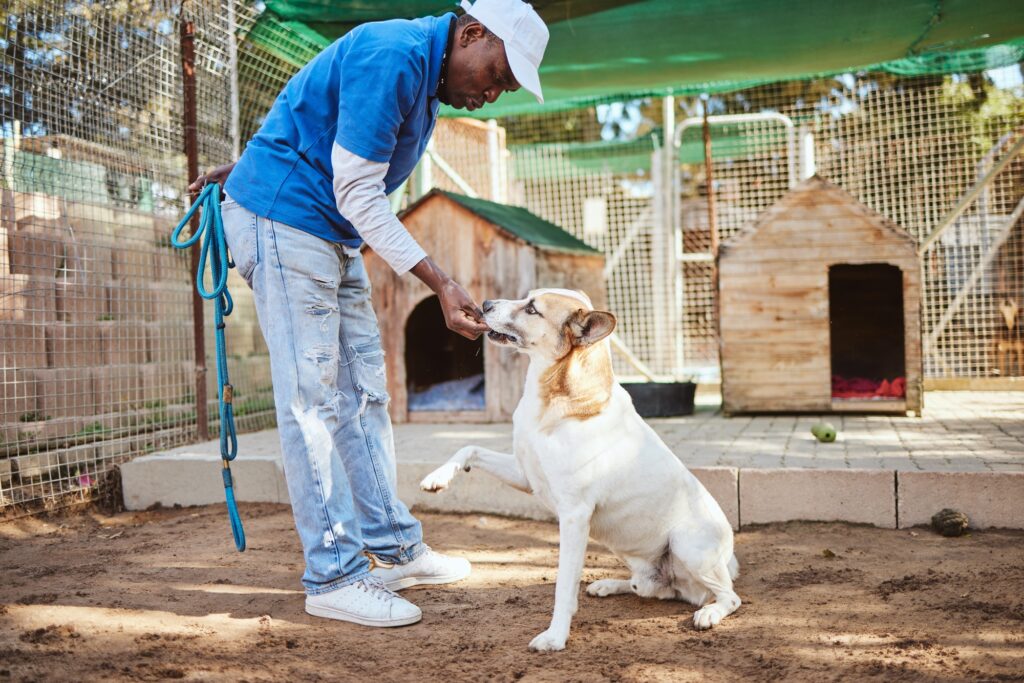Rehoming animals is a complex and emotionally charged process that affects not only the families involved but, most significantly, the pets themselves. When an animal is surrendered to a new home or shelter, they experience a profound shift in their environment, routine, and emotional connections. This transition can be particularly challenging for pets who have formed strong bonds with their previous families. While rehoming is sometimes necessary due to unavoidable circumstances, understanding its impact on animals is crucial for both current pet owners considering this option and potential adopters looking to provide a forever home. This article explores the various aspects of pet rehoming, its effects on animal welfare, and how we can work together to ensure better outcomes for our furry friends in transition.
Common Reasons for Rehoming Animals
The decision to rehome a pet is rarely simple or straightforward. Pet owners face various challenging circumstances that may lead them to consider finding a new home for their beloved animals. While each situation is unique, several common factors consistently emerge as primary reasons for pet rehoming. Understanding these factors is crucial not only for current pet owners facing difficult decisions but also for potential adopters and animal welfare organizations working to address and prevent unnecessary rehoming situations. Let’s explore the most frequent circumstances that lead to pet rehoming and their implications for both families and their pets.
Financial Constraints and Unexpected Costs
Rehoming animals often occurs due to financial hardships, making it one of the most challenging and frequent reasons pet owners must make this difficult decision. The expenses of pet ownership can be substantial and frequently unpredictable. Though many families plan for basic costs like food, routine vet visits, and essential supplies, unexpected veterinary emergencies or ongoing health issues can quickly strain household finances. These unplanned expenses, ranging from emergency procedures to long-term medical treatments, sometimes leave families with no choice but to consider rehoming animals. Economic difficulties such as unemployment, income reduction, or other financial challenges can make it impossible to provide the level of care pets need. The situation becomes especially distressing when families must weigh their own essential needs against their ability to properly care for their beloved pets.
Moving to Pet-Restricted Housing

Rehoming animals due to pet-restricted housing has become an increasingly common challenge for pet owners across the country. When families need to relocate, many discover that their housing options are severely limited by landlords and property owners who maintain strict no-pet policies or impose significant restrictions on the types and numbers of pets allowed.
Rehoming animals becomes a heartbreaking necessity when pet owners cannot find affordable, pet-friendly accommodations within their budget, particularly in urban areas where such properties are scarce or demand premium rates. The situation often leads to rehoming animals when families face unexpected moves due to career changes, financial circumstances, or other life events. This housing crisis particularly affects those with larger dogs, multiple pets, or certain breeds that face additional restrictions, forcing many loving pet owners to make the devastating choice between securing necessary housing and keeping their beloved companions.
Changes in Family Dynamics
Significant changes in family dynamics frequently lead to rehoming animals, particularly during major life transitions such as divorce, the arrival of a new baby, or changes in household composition. When families separate, determining pet custody can become a contentious issue, and sometimes rehoming animals becomes the only viable solution, especially if neither party can provide adequate care independently. The introduction of a new baby can also precipitate the need for rehoming animals, particularly if pets show signs of stress or inability to adapt to the presence of an infant, or if the demands of childcare leave insufficient time for pet care. Additionally, blending families through marriage may necessitate rehoming animals due to factors such as pet conflicts, space limitations, or allergies among new family members. These situations, while understandable, often create emotional turmoil for both the families and their pets.
Behavioral Issues and Training Challenges
Behavioral issues and training challenges often lead to rehoming animals, particularly when pet owners feel overwhelmed by their pet’s conduct or lack the resources to address these concerns effectively. Some common behavioral problems that result in rehoming animals include excessive barking, aggression towards other pets or people, destructive behaviors, and house-training difficulties. These issues can be especially challenging in multi-pet households or homes with young children. While many behavioral problems can be resolved with proper training, professional guidance, and patience, some pet owners may lack the expertise, time, or financial means to invest in necessary behavioral modification programs. This situation becomes more complex when pets exhibit severe anxiety, fear-based reactions, or aggressive tendencies that require specialized intervention, leading some families to conclude that rehoming animals might be in everyone’s best interest, including the pet’s.
Time Constraints and Lifestyle Changes
Time constraints and lifestyle changes frequently necessitate rehoming animals, as modern life’s demands can dramatically affect a pet owner’s ability to provide adequate care. Career changes that require longer working hours, frequent business travel, or relocation to a different city can significantly reduce the time available for pet care. Additionally, major lifestyle transitions such as returning to school, taking on additional family responsibilities, or health changes that limit mobility can make it challenging to maintain a pet’s exercise and care routine. Some pet owners find themselves unable to provide their pets with the attention, exercise, and companionship they need, particularly with high-energy breeds that require substantial daily activity. These situations often lead to the difficult decision of rehoming animals to ensure they receive the time, attention, and care they deserve from families better positioned to meet their needs.
Health Issues
Health issues, whether affecting the pet owners or the animals themselves, can be a significant factor in rehoming decisions. For pet owners, developing severe allergies, mobility limitations, or chronic conditions that impact their ability to provide proper care may necessitate finding their pets new homes.

Similarly, when pets develop complex medical conditions requiring specialized care or expensive ongoing treatments, some families find themselves unable to manage the financial or practical demands of these health challenges. This situation becomes particularly difficult when pet owners face the emotional strain of choosing between their own medical needs and their pet’s care, or when they lack the physical capability to meet their pet’s exercise and maintenance requirements. Senior pet owners may also face difficult decisions about rehoming when their own health conditions make pet care increasingly challenging, despite their deep emotional attachments to their animal companions.
Emotional Impact of Rehoming Animals
The emotional impact of rehoming animals is profound and multifaceted, affecting both the pets and their former owners in significant ways. When animals are separated from their familiar environments and the humans they’ve bonded with, they experience a range of emotional responses that can manifest in various behavioral and psychological changes. Understanding these emotional impacts is crucial for both those who must rehome their pets and those who are preparing to adopt previously rehomed animals. This awareness helps facilitate more compassionate transitions and enables better support systems for animals going through this challenging process. The emotional consequences of rehoming can be both immediate and long-lasting, influenced by factors such as the animal’s age, personality, previous experiences, and the circumstances of their rehoming.
There is Stress and Anxiety During this Transition
The process of rehoming animals often creates significant stress and anxiety for pets during the transition period. When animals are separated from their familiar surroundings and the people they’ve grown attached to, they frequently experience heightened levels of emotional distress. This anxiety can manifest in various ways, such as excessive vocalization, loss of appetite, increased hiding behavior, or unusual aggression. The uncertainty and unfamiliarity of their situation when rehoming animals can trigger their fight-or-flight responses, leading to elevated cortisol levels and physical symptoms of stress. Even the most well-adjusted pets may experience temporary depression or anxiety during this period, as they struggle to understand the changes in their environment and daily routines. This stress can be particularly acute in older animals or those who have lived with their previous families for extended periods, as they have developed deeper emotional bonds and more established routines.
There is Often an Adjustment Period in New Environments
When animals enter new environments after being rehomed, they typically undergo a significant adjustment period that can last anywhere from a few weeks to several months. During this time, pets need to acclimate to new surroundings, routines, smells, sounds, and family dynamics. Many animals initially display hesitancy or uncertainty, taking time to explore their new space and establish comfort zones. This adjustment period often involves learning new household rules, understanding different feeding schedules, and adapting to new walking routes or exercise routines. Some pets may initially seek out quiet spaces or display reduced activity levels as they process these changes. It’s crucial for new owners to be patient during this transition, providing consistent routines and gentle encouragement while allowing the pet to adjust at their own pace. Creating a stable, predictable environment with designated safe spaces can help ease this adjustment period and help the animal feel secure in their new home.
There Can be Behavioral Changes and Coping Mechanisms
When animals experience rehoming, they often exhibit various behavioral changes and develop unique coping mechanisms to deal with their new circumstances. These adaptations can manifest in different ways, such as increased dependency on new caregivers, temporary regression in house training, or changes in social interactions with humans and other animals. Some pets might become more clingy or develop separation anxiety, while others might initially withdraw or show decreased interest in activities they previously enjoyed. Common coping mechanisms include excessive grooming, changes in sleeping patterns, or developing new routines that help them feel secure. Some animals might also display defensive behaviors like resource guarding or increased vocalization as they attempt to establish control in their new environment. Understanding these behavioral changes is crucial for new pet owners, as it helps them provide appropriate support and patience during the transition period, allowing the animal to develop healthy coping strategies in their new home.
There Might be Long-Term Effects on the Pets Personality

The process of rehoming animals can have lasting effects on a pet’s personality and behavioral patterns that persist long after the initial adjustment period. When animals experience multiple transitions or traumatic separations, they may develop permanent changes in their temperament, such as increased wariness of new people, heightened sensitivity to environmental changes, or lasting attachment issues.
Some pets who have gone through the rehoming process may become more independent or distant, while others might develop excessive attachment to their new caregivers as a protective mechanism. These personality shifts can manifest in various ways, such as ongoing anxiety during routine changes, persistent trust issues, or a general reluctance to form deep bonds with new people. Understanding these potential long-term effects is crucial for both those considering rehoming animals and prospective adopters, as it helps create realistic expectations and ensures appropriate support throughout the pet’s life.
Impact That Rehoming Animals has on Shelters and Rescue Organizations
The impact of rehoming animals on shelters and rescue organizations is substantial and multifaceted, affecting these institutions’ operations, resources, and overall ability to serve their communities. When pet owners make the decision to surrender their animals, shelters and rescue organizations become the front-line responders, tasked with providing immediate care, medical attention, and eventually finding new homes for these pets. These organizations, often already operating at or near capacity, must constantly adjust their resources and staffing to accommodate the steady influx of rehomed pets. This creates a complex chain of challenges that affects everything from facility space management to financial stability, while also placing significant emotional demands on staff and volunteers who work tirelessly to ensure the best possible outcomes for these animals in transition.
Resource Allocation and Capacity Issues
When rehoming animals, shelters and rescue organizations face significant challenges in managing their limited resources and facility capacity. These organizations must carefully balance their available space, supplies, and staff to accommodate an ever-changing population of animals. Many shelters operate at maximum capacity, forcing them to make difficult decisions about intake policies and sometimes implement waitlists for owner surrenders. The strain on resources becomes particularly acute during peak surrender seasons or when multiple large-scale rehoming situations occur simultaneously. Physical space limitations often require creative solutions for housing arrangements while maintaining proper separation for health and safety protocols. Additionally, organizations must allocate resources for special needs animals, such as those requiring isolation, medical treatment, or behavioral rehabilitation, which can further tax their already stretched capacity. This constant juggling of resources and space affects the organization’s ability to provide optimal care for each animal while maintaining their commitment to accepting new cases.
Financial Implications
The financial implications of rehoming animals create significant burdens for shelters and rescue organizations, which must absorb substantial costs associated with each surrendered pet. When pet owners opt for rehoming animals, these organizations face immediate expenses, including medical examinations, vaccinations, spaying or neutering procedures, and potential treatments for existing health conditions. The costs extend to daily care necessities such as food, bedding, cleaning supplies, and essential medications. Additionally, organizations often invest in behavioral training and rehabilitation programs to make pets more adoptable. These financial pressures are compounded by the fact that many shelters operate primarily through donations and adoption fees, which rarely cover the full cost of caring for each animal. The situation becomes particularly challenging during economic downturns when there’s typically an increase in pet surrenders while simultaneously experiencing a decrease in donations and support.
Staff and Volunteer Emotional Burden
The emotional burden on shelter staff and volunteers who handle rehoming animals is significant and often overlooked. These dedicated individuals frequently experience compassion fatigue and emotional exhaustion from witnessing the constant stream of animal surrenders and managing the complex emotions of both pets and their former owners.

Staff members must maintain professional composure while processing surrenders, even when faced with heart-wrenching situations or preventable circumstances. They also shoulder the responsibility of making difficult decisions about limited resources and space allocation, which can lead to moral distress. Volunteers and staff often form bonds with animals in their care, making it emotionally challenging when these pets struggle to adjust or face extended periods without adoption. The cumulative effect of handling multiple rehoming cases, coupled with the responsibility of providing emotional support to both animals and humans during these transitions, can lead to burnout and secondary traumatic stress among shelter workers. This emotional toll is particularly heavy when dealing with cases involving elderly pets, bonded pairs being separated, or animals with special needs who may face longer wait times for suitable adoptive homes.
Understanding the Complexities of Rehoming Animals
Rehoming animals is a complex and emotionally charged process that affects pets, owners, and animal welfare organizations alike. While the decision to rehome a pet is never easy, understanding the various factors that lead to this choice and its widespread impact can help create more compassionate and effective solutions. By acknowledging the emotional toll on both animals and humans, supporting shelters and rescue organizations, and working to address the root causes of pet surrenders, we can build a more sustainable and humane approach to rehoming animals. As communities continue to evolve and face new challenges, it’s crucial to develop better support systems and resources that help keep pets with their families when possible, while ensuring safe and caring transitions when rehoming becomes necessary.
